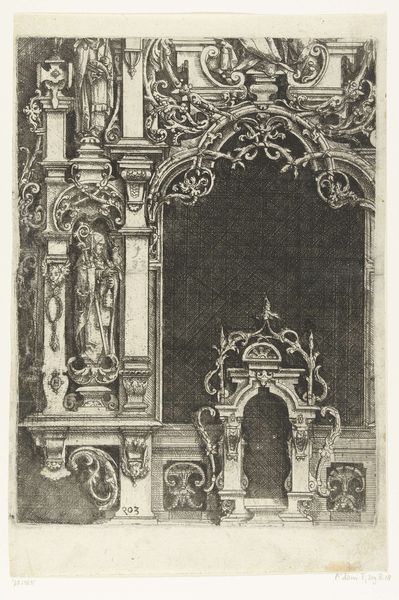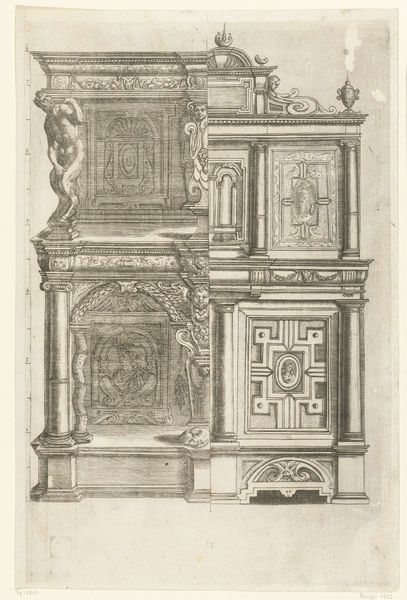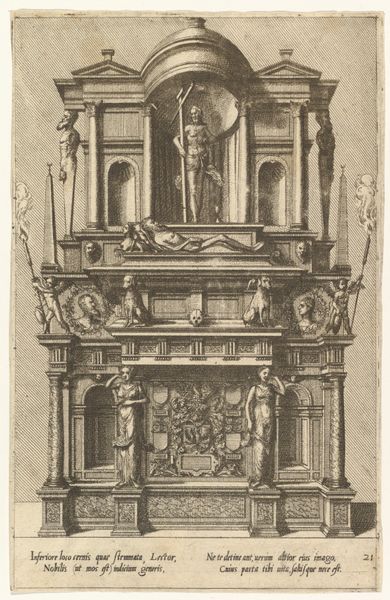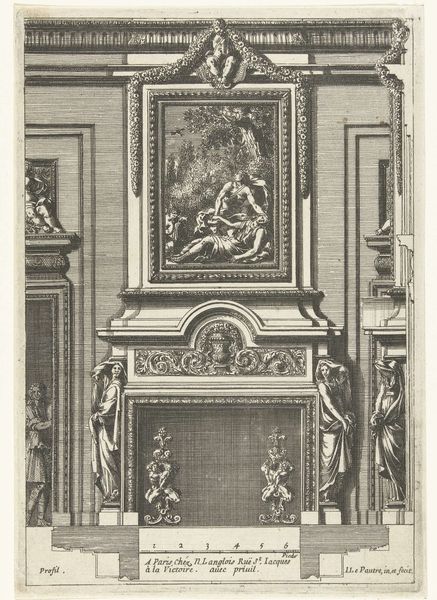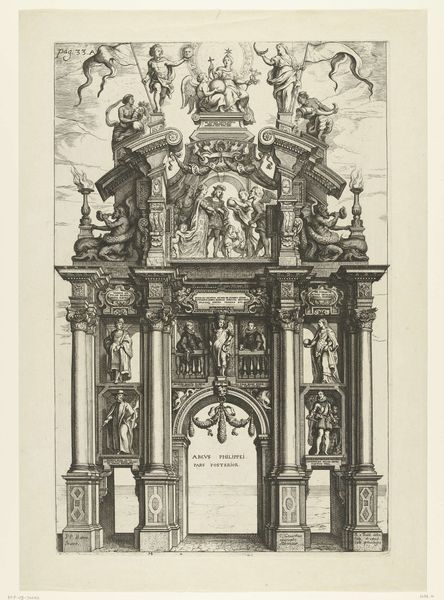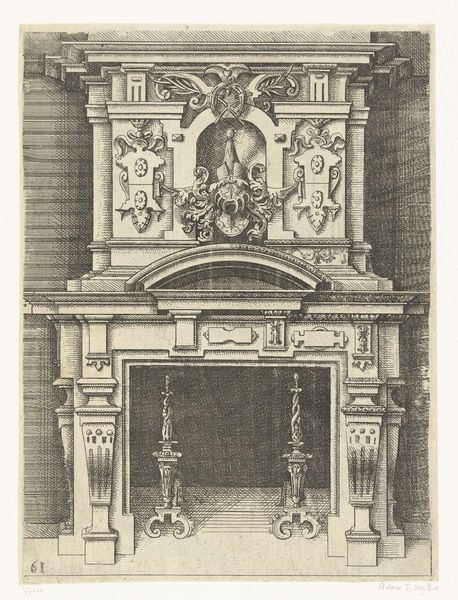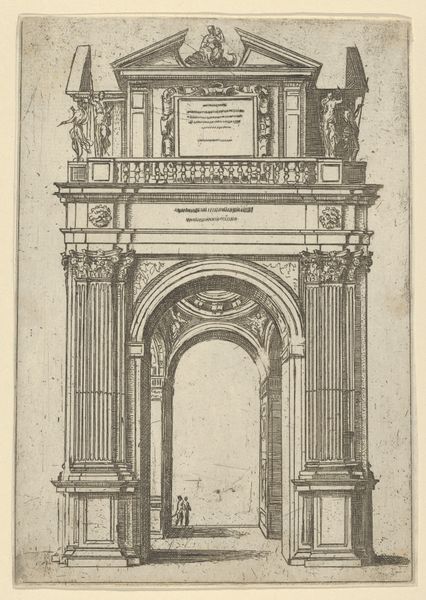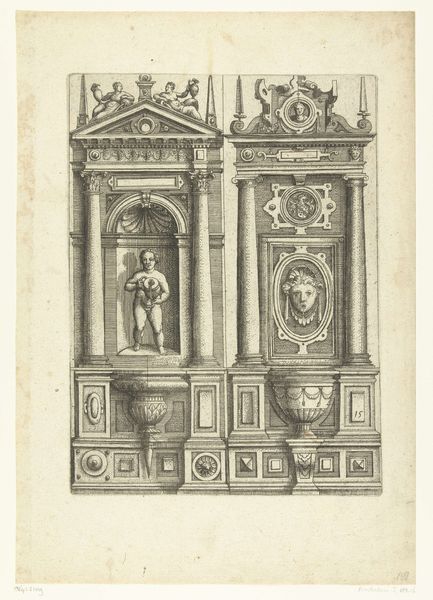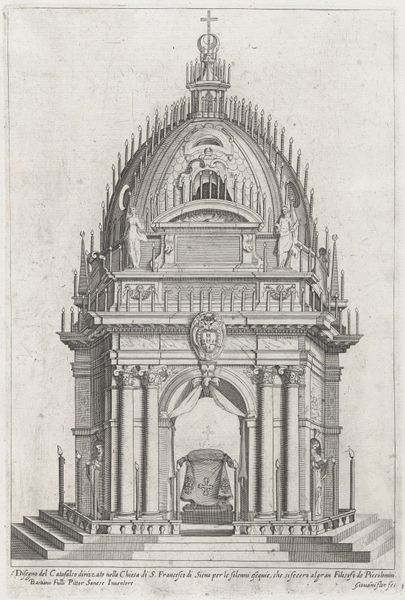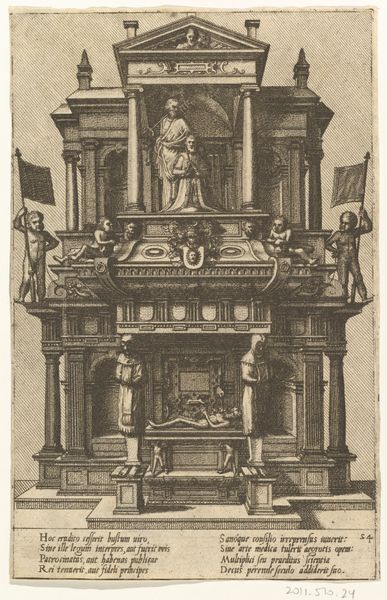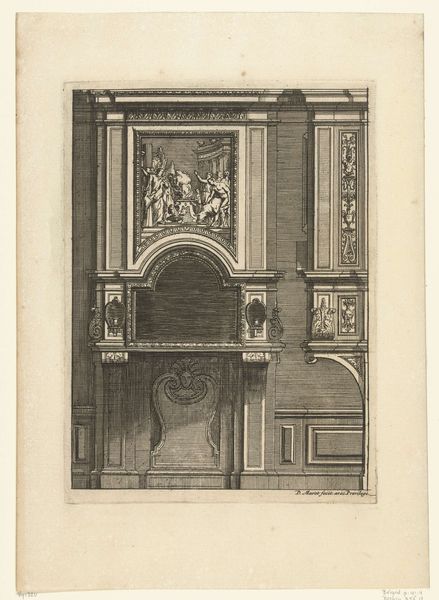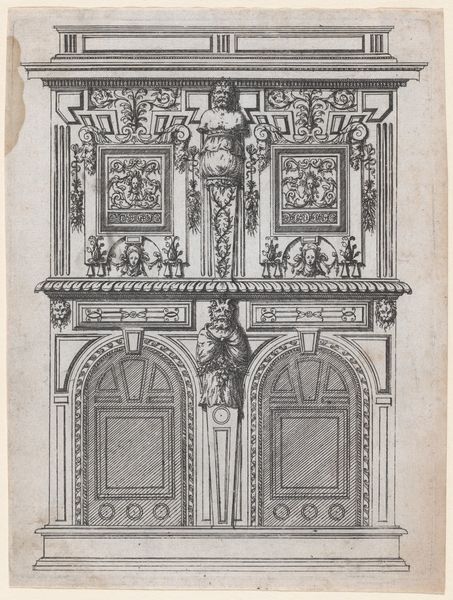
Dimensions: 394 × 197 mm (image/plate); 399 × 200 mm (sheet)
Copyright: Public Domain
Editor: Here we have Donald Shaw MacLaughlan's 1909 etching, "Doorway of the Doges', Venice." The intricate detail is incredible. The texture almost gives the doorway a ghostly feel. How do you read this artwork? Curator: It's like a memory, isn't it? That hazy line between present and past. Venice has that quality – its beauty clinging to every crumbling corner. For me, this doorway isn't just stone; it’s a portal. Look at the figures in the archway, like souls ascending. MacLaughlan uses etching to capture the luminosity of Venice, the light dancing on the water and stone. The detail in the doorway almost overwhelms you, like being pulled into another time. Don’t you feel it? Editor: I do, it's almost like peering into the past. All the detail on the Doge's Palace feels like the entryway has stories to tell, both beautiful and maybe also frightening. All that weight seems concentrated in the details he's included, down to the figures and the lion. Curator: Precisely! Think about the winged lion – a symbol of St. Mark and, by extension, Venetian power. But in MacLaughlan's rendering, does it feel powerful or more like a relic, a shadow of its former self? The etching feels alive but faded; it's really moving. Editor: I see what you mean. There's grandeur, but also a quiet acceptance of the passage of time. That doorway welcomes, but also maybe remembers. It's made me look at the architecture here in a totally different way. Curator: Art's greatest magic trick: changing how you look at the world. Next time you pass through a doorway, ask yourself what stories *it* holds.
Comments
No comments
Be the first to comment and join the conversation on the ultimate creative platform.
